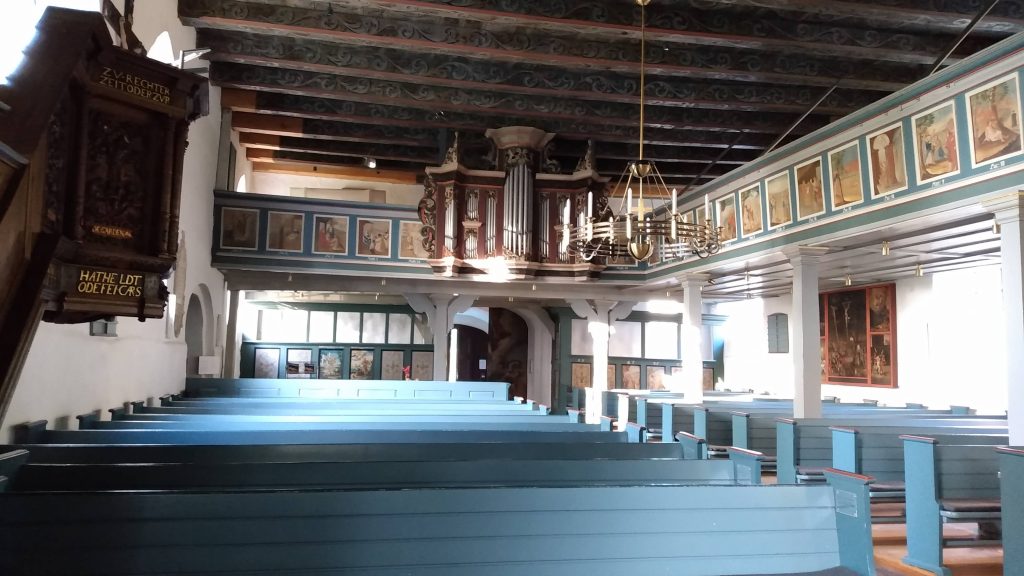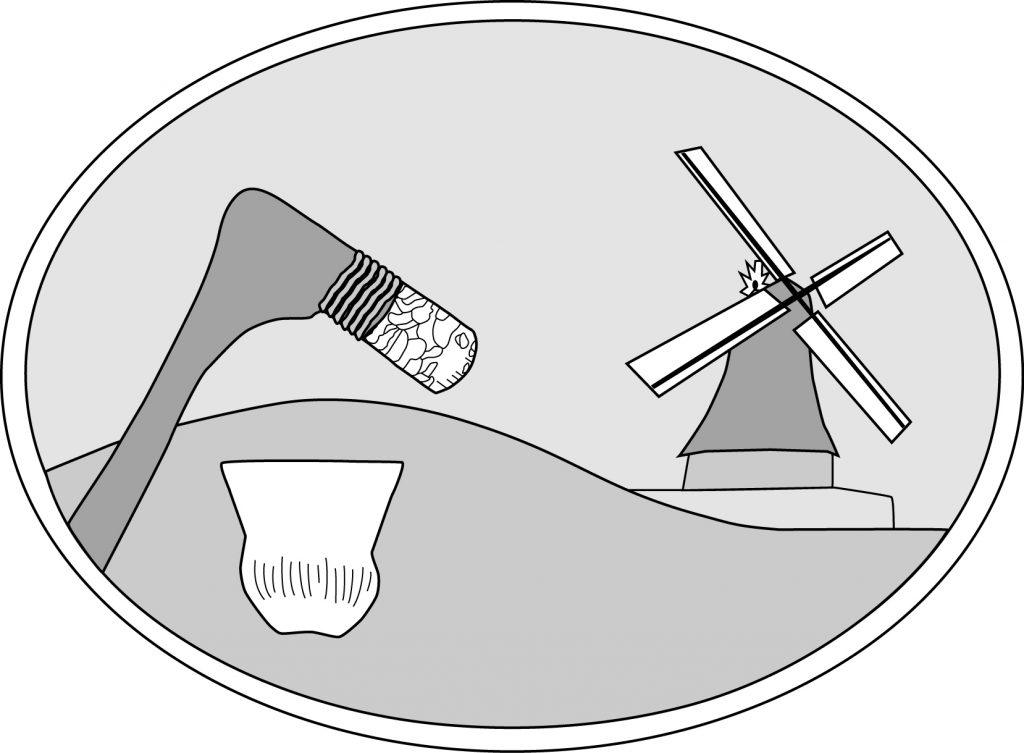
1712, its year of construction, can be read on the roof of the church. This makes it the youngest church in Stapelholm, which at that time replaced the former dilapidated building. However, it is not certain over what period this existed: Bergenhusen was first mentioned in an ecclesiastical context in 1304, so there must have already been a church at that time. It is assumed that it could have been a rock chapel probably founded in the 12th century.
After the church had become so dilapidated in the 18th century that services could no longer be held in it, the Duke of Schleswig-Holstein-Gottorf ordered the repair of the church and bell tower in 1711. However, the congregation decided to build a new, larger church on the extended foundation walls of the chapel. Initial difficulties finding finance were overcome by two church building lotteries. On December 14, 1712, the new church was consecrated in the presence of the duke. The cornerstones on the east side of the church still bear witness to the history of its construction today.
However, not everything was completely renewed during the renovation: stones from the old church were used to build the new hall church, whose wide, pointed-arched windows are reminiscent of the Gothic period. This contrasts with the chancel, which has a Baroque-style altarpiece dating from around 1650. The late Gothic baptismal font made of dark marble also dates back to the original chapel. Its extraordinary size – in order to be able to immerse the infants completely during baptism – dates it back to Catholic times. The pulpit from 1637, which according to the inscription was donated by Katharina Odefey, the widow of the former bailiff of the parish, is also a remnant from the old church.

– © F. Mohrwinkel
Wohlde and Meggerdorf also belong to the Bergenhusen parish. The large entrance door, which leads from the nave into the tower, testifies to this connection: The painting on the inside of this door was donated by Meggerdorf parishioners in 1734. It shows the only depiction of the resurrection in the church, and to this day, especially at funeral services, it symbolically reminds the congregation that the last journey to the cemetery is made in the light of the resurrection. The cemetery itself was first traditionally located in the churchyard and was moved to the paddock west of the church in 1863.



